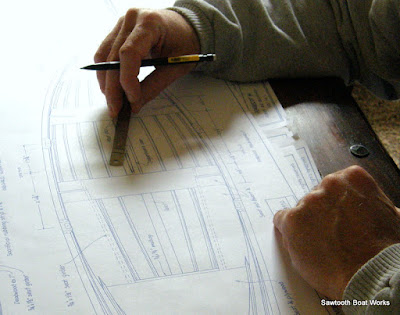
In his book,
Building Catherine a 14 foot pulling boat in the whitehall tradition, Richard Kolin states the following:
"The origins of the Whitehall boat are misty at best. W.P. Stephens, the noted small-craft historian, thought the type originated at Whitehall Street in New York City in the 1820s. Other reports say the boat originated in Whitehall, England. Wherever it originated, by the time the clipper ships reached prominence, the Whitehall boat was frequently mentioned in literature describing waterfront activities. It continued as a dominant feature of waterfront commerce until the small, inexpensive gasoline engine emerged in the early 20th century. In the late 19th century, in Boston, Capt. Charlton Smith counted 75 working Whitehalls at "The Hub"" and another 19 in the "Cow Pen." During the same period, Tom Crowley, a San Francisco Whitehall boatman, reported 80 to 100 working Whitehalls in San Francisco.
The Whitehall boat performed the function of a water taxi. It ferried captains, businessmen, newspaper reporters, government functionaries, and assorted waterfront characters to and from ships arriving at the major harbors of the United States. Ed McCarthy, who was a San Francisco Whitehall boatman at the end of the Whitehall period, claimed: "When word came in from the lookouts that a ship was on the way in, the boatmen would all pile into their boats and race out to her. In each boat would usually be a chronometer man, a butcher, a grocer, a ship stores man. The first boatload would get all of her business while she was in port.
The working Whitehall boats were generally 17 to 20 feet in length, 4 feet 6 to 8 inches in beam, about 20 inches deep, and weighed over 250 pounds. The type spread rapidly and is best known in relation to New York, Boston, and later San Francisco, although it was used extensively in most harbors. In time, the Whitehall became the dominant influence on the design and construction of small yacht tenders and rowing boats through most of the 19th and early 20th centuries."
Row, row, row your boat...life is but a dream.


















